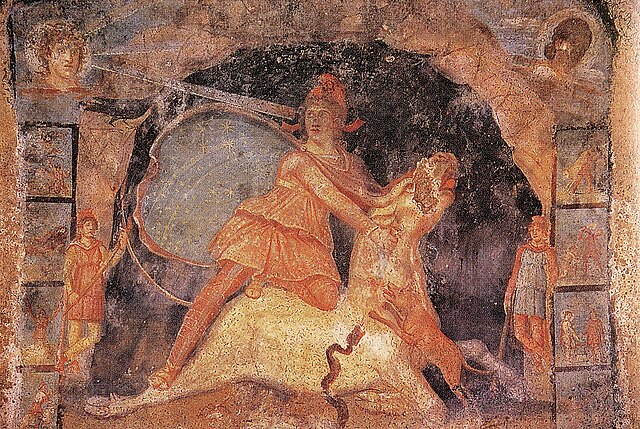In Greek mythology, the Cabeiri or Cabiri, also transliterated Kabeiri or Kabiri, were a group of enigmatic chthonic deities. They were worshipped in a mystery cult closely associated with that of Hephaestus, centered in the north Aegean islands of Lemnos and possibly Samothrace—at the Samothrace temple complex—and at Thebes. In their distant origins the Cabeiri and the Samothracian gods may include pre-Greek elements, or other non-Greek elements, such as Thracian, Tyrrhenian, Pelasgian, Phrygian or Hittite. The Lemnian cult was always local to Lemnos, but the Samothracian mystery cult spread rapidly throughout the Greek world during the Hellenistic period, eventually initiating Romans.
Agamemnon, Talthybius and Epeius, relief from Samothrace, ca. 560 BC, Louvre
Mystery religions, mystery cults, sacred mysteries or simply mysteries, were religious schools of the Greco-Roman world for which participation was reserved to initiates (mystai). The main characterization of this religion is the secrecy associated with the particulars of the initiation and the ritual practice, which may not be revealed to outsiders. The most famous mysteries of Greco-Roman antiquity were the Eleusinian Mysteries, which predated the Greek Dark Ages. The mystery schools flourished in Late Antiquity; Emperor Julian, of the mid 4th century, is believed by some scholars to have been associated with various mystery cults—most notably the mithraists. Due to the secret nature of the school, and because the mystery religions of Late Antiquity were persecuted by the Christian Roman Empire from the 4th century, the details of these religious practices are derived from descriptions, imagery and cross-cultural studies. Much information on the Mysteries comes from Marcus Terentius Varro.

Hydria by the Varrese Painter (c. 340 BC) depicting Eleusinian scenes
The central iconographical component of the mysteries depicts the slaying of a bull by Mithras



